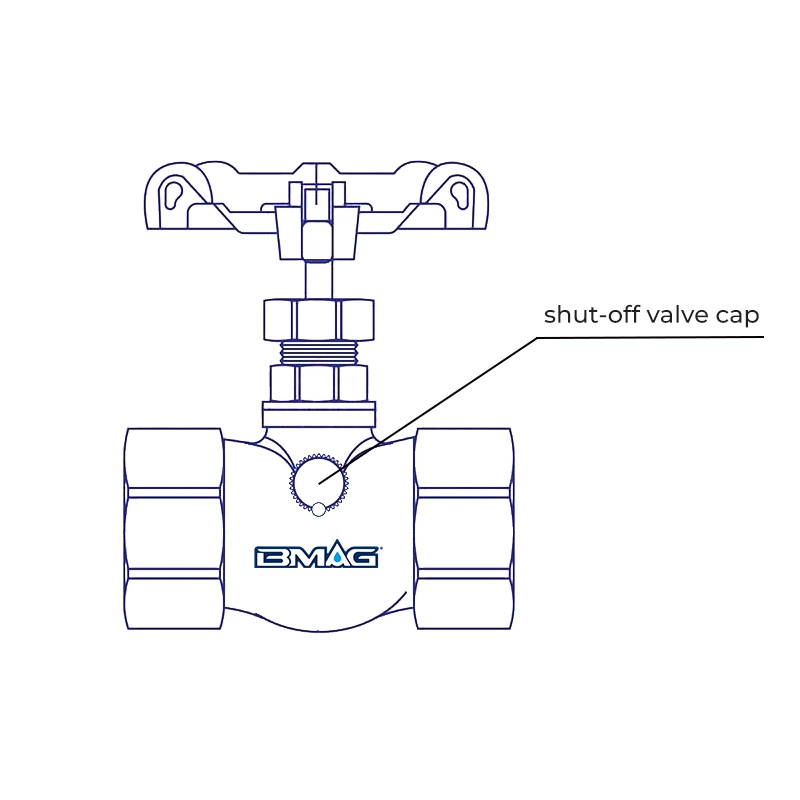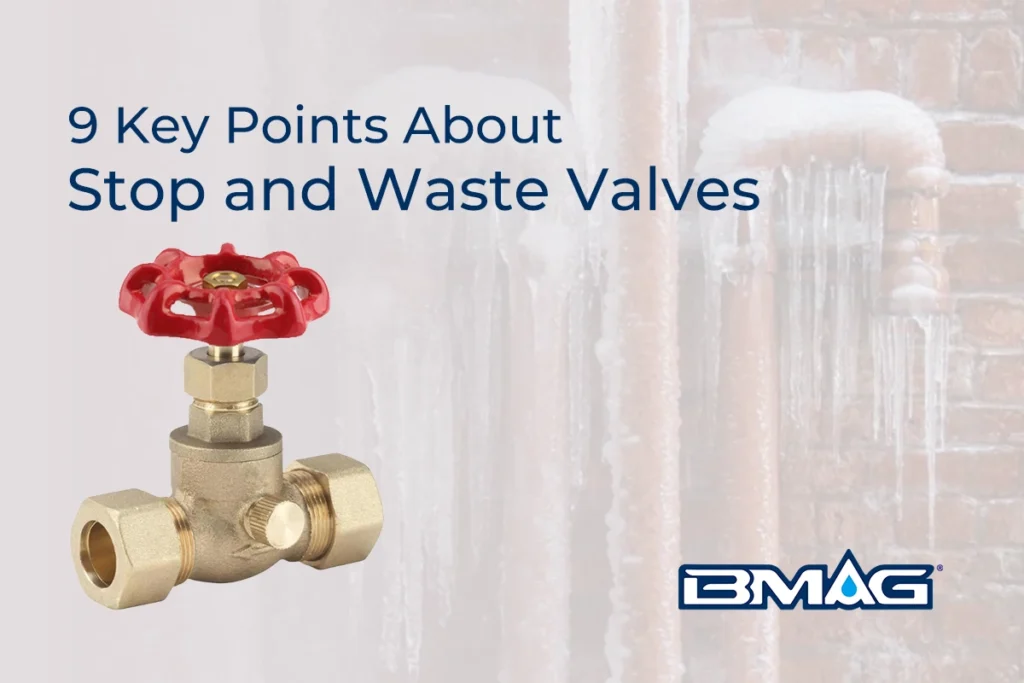A stop and waste valve(stop waste valve) is an upgrade based on a stop valve. An additional drain hole is drilled into the valve body that can be switched on and off with a shut-off valve cap. It is commonly used in plumbing and irrigation systems, particularly for outdoor faucets and sprinkler systems. Its primary function is to cut off the water and simultaneously drain the residual water in the pipe at the back end of the valve, preventing damage from freezing and breaking.
What is a Stop and Waste Valve?
A stop and waste valve is a multi-functional valve that combines the features of a stop valve and a drain valve. It allows users to not only stop the water flow but also to drain the water remaining in the downstream piping. This draining action is crucial in regions prone to freezing, it can prevent trapped water from expanding after freezing and bursting pipes.
The name ‘Stop and Waste Valve’ includes ‘waste’ because it allows the water at the back end of the pipe to be drained, which essentially amounts to wasting water. They are typically found in residential and commercial settings, controlling water supply to outdoor faucets, sprinkler systems, and other fixtures exposed to the elements in colder areas.

How a Stop Waste Valve Works?
The manual drain hole on the valve body is the key to the Stop and Waste Valve’s functionality. Compared with traditional stop valves, when the stop Waste Valve is shut off, you can open the drain hole and let the water drain out of the pipe, allowing air to enter. This prevents the water from freezing and expanding, which could cause the pipe to burst.
Stop and Waste Valve Diagram:
- The drain hole and shut-off valve cap are the key components of Stop and Waste Valves

Stop and Waste Valves Sprinkler System:
Stop and waste valves are vital in sprinkler systems, especially in regions with freezing winters. By draining the water from the sprinkler lines before winter, homeowners can prevent costly damage caused by freezing and expanding water. These valves are typically installed at the beginning of each sprinkler zone, allowing for individual zone isolation and drainage. This targeted approach allows for maintenance or repairs on a specific zone without shutting down the entire sprinkler system.
Usage Scenarios and Applications:
- Outdoor Faucets: Protecting outdoor faucets from freezing is a primary application of stop waste valves.
- Sprinkler Systems: Essential for winterizing sprinkler systems and isolating zones for maintenance.
- Swimming Pools: Used to drain water lines supplying pool equipment.
- Irrigation Systems: Similar to sprinkler systems, they protect irrigation lines from freezing.
- Plumbing Repairs: Allowing isolated sections of plumbing to be drained for repairs without affecting the entire water supply.

Types of Stop and Waste Valves:
Stop and waste valves are available in various configurations, including:
- Stop & Waste Globe Valves: there is a small drain hole in the valve body
- Stop & Waste Ball Valves: there is a small drain hole in the ball

According to the connection method, it can be divided into:
- threaded connection Stop & Waste Valves
- Welding CXC Stop & Waste Valves (Solder x Solder)
Materials and Standards:
Stop & waste valves are commonly made of brass and bronze. The choice of material depends on the application and local plumbing codes. It’s crucial to select valves that meet relevant industry standards, such as those set by ANSI (American National Standards Institute) and ASTM (American Society for Testing Materials), to ensure quality and reliability.
How to Install or replace a stop & waste valve?
If you are installing a stop & waste valve in an existing pipe, you need to choose to weld CXC stop and waste valve.


- First, measure the length of the stop waste valve and subtract the length of the two sections of water pipes inserted into the valve.
- Cut the corresponding length on the water pipe to be installed.
- Apply a thin coat of cement to the tube that is equal to the depth of the socket on the valve. Make sure that there is no uncoated surface on the portion of the tube on the valve.
- Arī, apply a thin layer of cement inside of the socket on the valve.
- Install the valve, heat the joint with a torch, and seal it with solder strips.
Do stop and waste valves leak?
Some kinds of stop & waste valves do not have a cap. So when it is shut off, The water in the pipe at the back end of the valve will flow directly out of the drain hole. Looks like the stop and waste valves are leaking. Don’t worry, it’s okay.
Conclusion:
Stop & waste valves are one of the most important valves for outdoor pipelines in cold areas. Especially in the field of plumbing and irrigation systems, offering a simple yet effective solution for preventing freeze damage and facilitating repairs. Understanding their functionality, applications, and proper usage is crucial for homeowners, plumbers, and irrigation professionals. By incorporating these valves into their designs and installations, they can ensure the longevity and reliability of their plumbing and irrigation systems.
Choose BMAG to get the best quality products and services at the lowest prices.
Contact customer service to get a quote.










